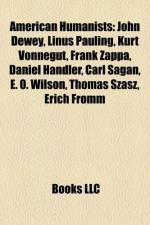|
This section contains 274 words (approx. 1 page at 300 words per page) |

|
As a speculative skeptic, a lucid popularizer of science, and a belles-lettrist eager to bridge the gap between the humanities and science, Sagan stands as the latest practitioner in an illustrious tradition which, because it is fundamentally British, remains too little known among American readers. His forebears include Thomas Henry Huxley, Alfred North Whitehead, Bertrand Russell, James Jeans, Arthur Stanley Eddington, Julian Huxley, J. B. S. Haldane, and Fred Hoyle. All shared the view that science was accessible to the common man and woman, intellectually both disturbing and exciting, yet emotionally and philosophically significant. All were capable of turning a popular prose essay into, at once, a work of art and a tour de force of pedagogy.
The evolution of Sagan's own writing style is interesting…. As Sagan matured, his writing grew less flashy, more deeply metaphorical. Something of a poet's sensibility now infuses his musings on the...
|
This section contains 274 words (approx. 1 page at 300 words per page) |

|


